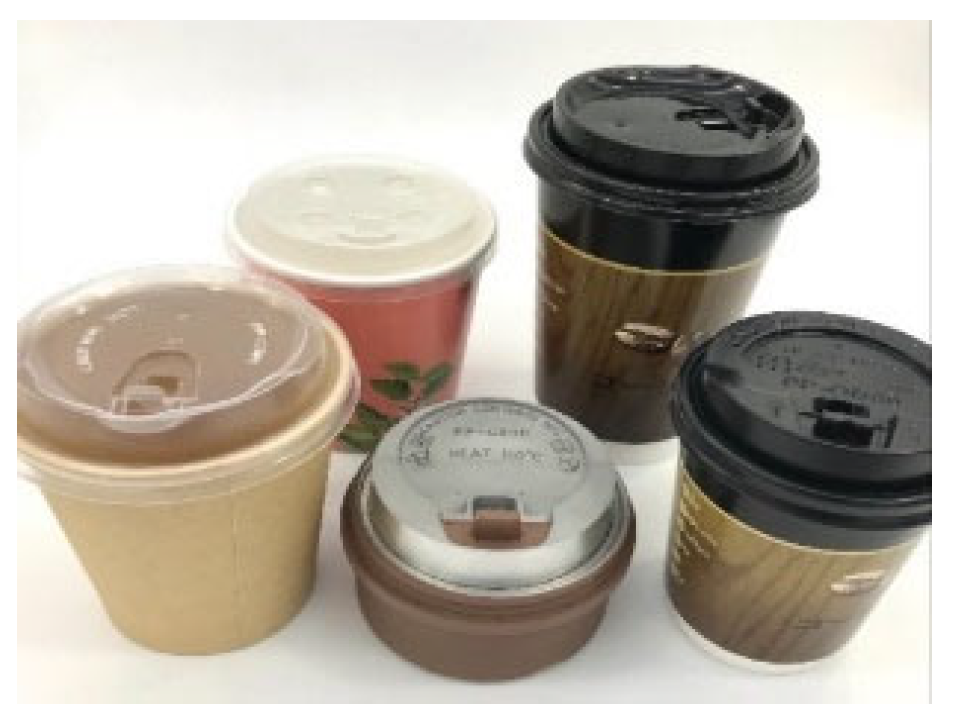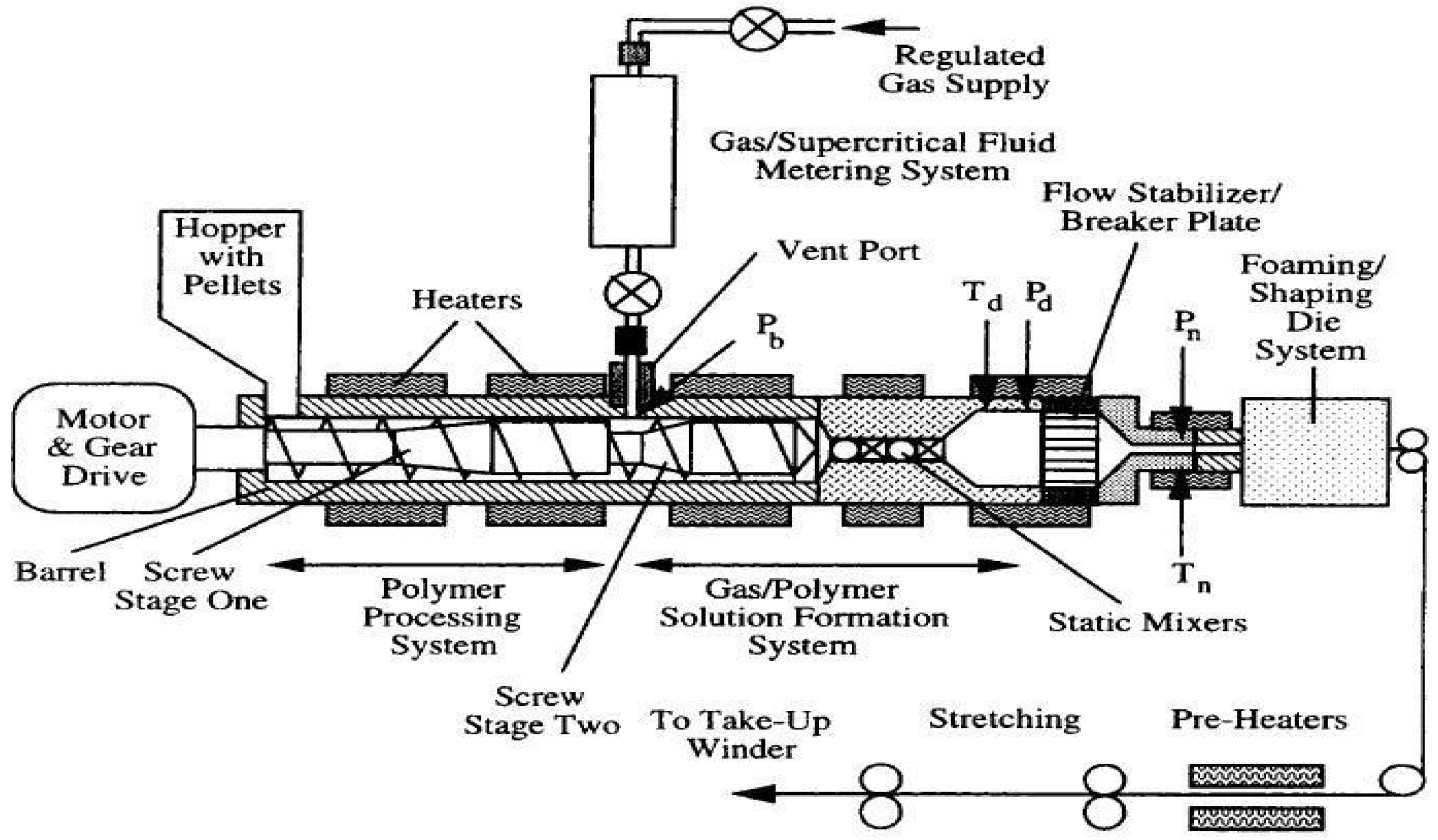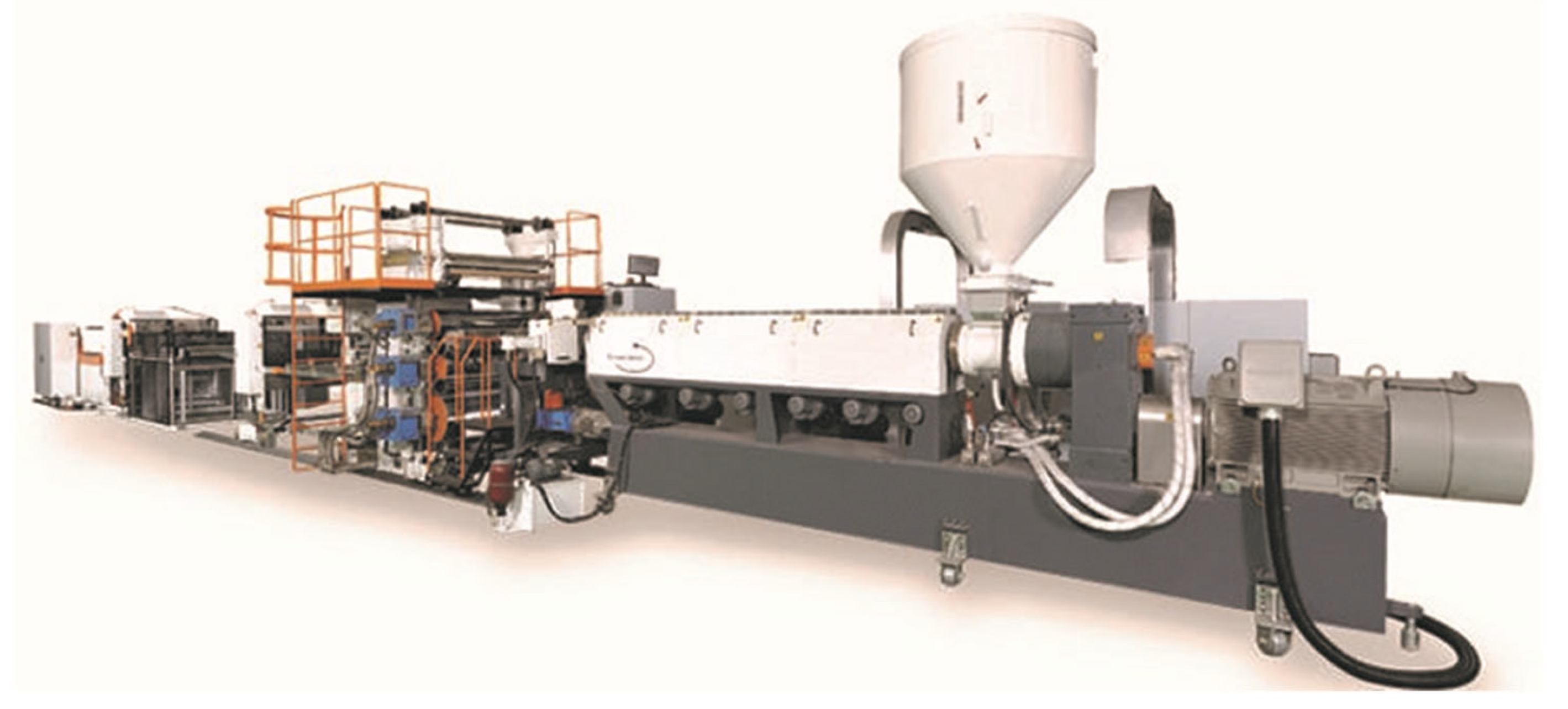You're using an outdated browser. Please upgrade to a modern browser for the best experience.
Please note this is an old version of this entry, which may differ significantly from the current revision.
Polypropylene is derived from the reaction of petrochemical propylene gas with a density of 0.89–0.94 g/cm3. It is a lightweight plastic material with a semitransparent white color and has a lower cost than other plastic materials.
- Delphi technique
- extrusion molding
- key factors
1. Introduction
The prevalence of COVID-19 has severely impacted economic activities and common people’s lives worldwide [1]. The anti-epidemic measures have made many restaurants use portable food packages. When the epidemic situation became severe in 2021, many restaurants or shops stopped their dine-in services for epidemic control. Some stores went further to provide takeaway in disposable food packaging containers only. They refused to put food in the environmentally friendly containers of the customers. The epidemic prevention and environmental protection issues fall into a dilemma [2].
Most food packaging containers in the world are plastic and composite paper packaging materials. The annual consumption of different kinds of beverage paper cups in Taiwan is estimated at more than 2 billion pieces. According to the investigation of Greenpeace International in 2021 [3], it is hard to estimate the quantity increase during the COVID-19 pandemic. The issue of plastic reduction has been the trend and consensus of environmental protection globally [4]. In 2019, the European Union appealed to reduce the use of single-use plastics (SUP). They proposed the single-use plastics-related policy (EU) 2019/904 and SUP instruction. The EU required the member states to prohibit using some single-use plastics products since July 2021, which were generally regarded as the most familiar marine garbage [5], mostly dinnerware and beverage packing containers. To reduce pollution in the transition period, scientific methods are required to control the source, increase manufacturing efficiency, improve quality, and reduce the weight of products. There are many environmentally friendly materials for substituting plastic raw materials, especially the alternative products of biomass material [6] or degradable plastics [7]. However, there are problems in sanitary preservation and the pollutant plastic recycling system to be overcome, for example, using the biomass material polylactic acid (PLA) [8] to replace some plastic packaging materials for food. The replacement of material is not a radical solution. It can be confused with the existing plastics recycling system in Europe, e.g., polyethylene terephthalate (PET), resulting in more pollution and losses.
2. Polypropylene
Polypropylene [9] is derived from the reaction of petrochemical propylene gas with a density of 0.89–0.94 g/cm3. It is a lightweight plastic material with a semitransparent white color and has a lower cost than other plastic materials. It is also one of the recyclable plastic materials. In 1954, Italian chemist Giulio Natta successfully synthesized low-molecular-weight PP [10]. PP is a thermoplastic that is polymerized of propylene monomers, which are resistant to −20–120 °C. Its melting point is 145–162 °C, which is higher than HDPE [11]. Food packaging containers made of PP can be sterilized by steam. It has higher impact resistance and is resistant to multiple kinds of organic solvents and acid/alkaline corrosion. PP is the second largest polymer plastic in Europe. It accounted for 19.1% of the plastic output of the European Union in 2015 [12] and accounts for 21% of global production output [13]. PP is resistant to acid, alkali, and high temperatures (100–120 °C). Therefore, it is extensively used for food packaging containers. Food manufacturers pay attention to packages’ thermal performance or temperature requirements [14]. They generally use PP plastic raw material containers to protect the consumers’ food safety and health. Due to the COVID-19 pandemic, wearing a mask has become a basic consensus in epidemic prevention worldwide [15]. The primary material of non-woven fabrics for masks is PP, and one mask uses about 4 g of PP raw material [16]. Medical masks and protective clothing are closely related to PP.
The sample of the purpose is producing coffee cup lids of polypropylene material, as shown in Figure 1. The features of the chosen material are different. Although it is general purpose, the object uses polypropylene homopolymer as a material with several features [17]: (1) high transparency, (2) good moldability, (3) high stiffness, and (4) high heat deflection temperature. Recently, newly developed expanded polypropylene (EPP) sheets, in the place of expanded polystyrene (EPS), are used generally in the automobile industry [18]. Furthermore, although the additives or agents in the extrusion process for expanded or non-expanded polypropylene sheets have different uses [19], the key factor of product quality control stays the same. Similarly, the processes of vacuum forming and mold design for both are different as well. Expanded polypropylene sheets for food packaging can achieve less material usage, better isolation purpose, and higher heat resistance under the slight changing in the parameter setting on the basis of their different shrinkage ratio. As long as changing the extruded die and cooling mandrel, etc. is a key factor, it can also achieve the good result in production quality control to use isobutane or CO2 as a blowing agent injected in the extruder to increase the foaming ratio under the physical foaming process, as shown in Figure 2 [20]. The study can correspond to the key factor in the quality of thermoforming processing. Many manufacturers stopped producing foamed (Styrofoam) food containers due to the prohibited policy in Taiwan in July 2022, so no further explanation in expanded polypropylene was needed.

Figure 1. Polypropylene coffee lid with molds.

Figure 2. The schematic of polypropylene physical foaming process (Reprinted with permission from Ref. [20]. Copyright 2022, Chen and Lin).
3. Extrusion Molding
Extrusion vacuum forming [21][22] is a standard plastic heating method. The granular or sheet polymer material of a plastic fiber is heated and melted by an extruder [23]. After the extrusion sheet is obtained, the plate [24] or sheet skin material roll of the melt is continuously heated by a mold [25] or molding module or vacuum pressed [26]. After cooling modeling, the plate or sheet skin is then cut into plastic products.
In recent years, constant innovative techniques to develop special-purpose machines with higher demand in the market for food containers continuously keeps going. The machine, as shown in Figure 3 [27], for mass production in extrusion in-line with a thermoforming system reduces the heating time in the heat tunnel before sheets in the forming process to raise the cycle time, increase efficiency, and decrease energy consumption in manufacturing, leading to cost savings. In the meantime, intelligent control systems and robotic arms conducted in automatic machinery lessen the risk of operation error and manual movement. This achieves manpower savings, increases operator safety and reduces the risk of accident. Currently the product process of a polypropylene in-line system is extrusion connected with a thermoforming machine, such as a cut-in-mold thermoforming machine, and further in connection with an automatic regrind recycling system, as shown in Figure 4 [28].

Figure 3. Full-automatic polypropylene extrusion line (Reprinted with permission from Ref. [27]. Copyright 2022, Sunwell Global).

Figure 4. The schematic of polypropylene extrusion and thermoforming in-line system (Reprinted with permission from Ref. [28]. Copyright 2022, Sunwell Global).
4. Key Success Factors
Professional quality controllers and production technologists were interviewed using a half-structured method to discuss the key factors in extrusion molding quality [29][30]. The key factor data were judged and collected according to the experience in real production and inspection. The data were scientifically analyzed to determine specific key success factors and obstacles [31]. Four main aspects were induced. The questionnaire content contained 49 subitem key factors, and the key success factors in extrusion molding quality were discussed.
5. Delphi Technology
The Delphi technology [32] is used in different areas of academic research [33], including curriculum planning and capability indexing. It can probe into or understand the assumptions and related decisions of many disciplines. If the background knowledge of Delphi technology is used, 10 to 15 experts and scholars for concluding the consensus of Delphi technology can meet the quantity standard of experts and scholars. Through repeated written discussion by anonymous and structured group interviews [34], the scholars and experts establish a consistent consensus with their expertise or technical experience and opinions to solve complex issues [35]. Anonymity is required in the Delphi interview process to avoid the complex factors of interpersonal communication disturbing objective respondence and avoid the psychological factor of authoritarian submission or bandwagon effect induced by leaders or senior executives of the group [36]. The anonymity enables expert group members to express their real opinions further and leads to different levels of considerations. The experts’ opinions are fairer. Murry and Hammons [37] indicated that the result of experts’ collective discussion and shared decision making should be more comprehensive than the conclusion of individual thinking. The expert group majorly consists of professors and scholars in plastic technique, including two university professors in chemical engineering, 11 scholars in mechanical design in enterprises, and polypropylene product engineers in manufacturing. The Delphi technique group is composed of method analysis scholars including four factory managers and eleven senior engineers with 21 years of experience. The Delphi technique members mainly work in mechanical manufacturing-related or research and development-related plastic extrusion thermoforming processing. These experts were chosen from homogeneous fields of experience and technique with less error and higher reliability.
This entry is adapted from the peer-reviewed paper 10.3390/app12105122
References
- Guan, W.J.; Ni, Z.Y.; Hu, Y.; Liang, W.H.; Ou, C.Q.; He, J.X.; Liu, L.; Shan, H.; Lei, C.L.; Hui, D.S. Clinical characteristics of coronavirus disease 2019 in China. N. Engl. J. Med. 2020, 382, 1708–1720.
- da Costa, J.P. The 2019 global pandemic and plastic pollution prevention measures: Playing catch-up. Sci. Total Environ. 2021, 774, 145806.
- Walther, B.A.; Yen, N.; Hu, C.S. Strategies, actions, and policies by Taiwan’s ENGOs, media, and government to reduce plastic use and marine plastic pollution. Mar. Policy 2021, 126, 104391.
- Clayton, C.A.B. Building Collective Ownership of Single-Use Plastic Waste in Youth Communities: A Jamaican Case Study. Soc. Sci. 2021, 10, 412.
- Elliott, T.; Gillie, H.; Thomson, A. European Union’s plastic strategy and an impact assessment of the proposed directive on tackling single-use plastics items. Plast. Waste Recycl. 2020, 601–633.
- Velvizhi, G.; Balakumar, K.; Shetti, N.P.; Ahmad, E.; Pant, K.K.; Aminabhavi, T.M. Integrated biorefinery processes for conversion of lignocellulosic biomass to value added materials: Paving a path towards circular economy. Bioresour. Technol. 2022, 343, 126151.
- Pizarro-Ortega, C.I.; Dioses-Salinas, D.C.; Severini, F.; López, A.F.; Rimondino, G.N.; Benson, N.U.; De-la-Torre, G.E. Degradation of plastics associated with the COVID-19 pandemic. Mar. Pollut. Bull. 2022, 176, 113474.
- Wei, H. Optimisation on Thermoforming of Biodegradable Poly (Lactic Acid), (PLA). Polymers 2021, 13, 654.
- Lau, H.C.; Bhattacharya, S.N.; Field, G.J. Melt strength of polypropylene: Its relevance to thermoforming. Polym. Eng. Sci. 1998, 38, 1915–1923.
- Tripathi, D. Practical Guide to Polypropylene; Rapra Technology Limited: Shrewsbury, UK, 2002; pp. 2–82.
- Ahmedzade, P.; Demirelli, K.; Günay, T.; Biryan, F.; Alqudah, O. Effects of Waste Polypropylene Additive on the Properties of Bituminous Binder. Procedia Manuf. 2015, 2, 165–170.
- Plastics Europe. Plastics the Facts-2016, an Analysis of European Plastics Production, Demand, and Waste Data; Plastic Europe: Brussels, Belgium, 2016.
- Geyer, R.; Jambeck, J.R.; Law, K.L. Production, use, and fate of all plastics ever made. Sci. Adv. 2017, 3, e1700782.
- Brasileiro, L.; Moreno-Navarro, F.; Tauste-Martínez, R.; Matos, J.; del Rubio-Gámez, M.C. Reclaimed Polymers as Asphalt Binder Modifiers, A review. Sustainability 2019, 11, 646.
- Rahman, M.Z.; Hoque, M.E.; Alam, M.R.; Rouf, M.A.; Khan, S.I.; Xu, H.; Ramakrishna, S. Face Masks to Combat Coronavirus (COVID-19)—Processing, Roles, Requirements, Efficacy, Risk and Sustainability. Polymers 2022, 14, 1296.
- China Futures Daily. More than 3000 New Mask and Protective Clothing Companies Are Added, Has the PP Market Felt It? China Futures Daily, 11 February 2022.
- Tammaro, D.; Ballesteros, A.; Walker, C.; Reichelt, N.; Trommsdorff, U. Expanded Beads of High Melt Strength Polypro-pylene Moldable at Low Steam Pressure by Foam Extrusion. Polymers 2022, 14, 205.
- Taiwan Plastics Industry Technology Development Center. High Melt Strength Polypropylene Materials for Physical Foaming, Plastics Column; Taiwan Plastics Industry Technology Development Center: Taichung, Taiwan, 2022.
- Kuhnigk, J.; Standau, T.; Dörr, D.; Brütting, C.; Altstädt, V. Progress in the development of bead foams—A review show less. J. Cell. Plast. 2022, in press.
- Chen, C.H.; Lin, K.C. The application of new developed expanded polypropylene, Department of Innovative Design and Entrepreneurship Management, Far East University, Tainan, Taiwan, 2013. Available online: https://cheers-longterm-cdn.cwg.tw/upload/1449060140.pdf (accessed on 16 May 2022).
- George, G. Thermoforming: A Plastics Processing Guide; Routledge: London, UK, 2018.
- Maier, C.; Calafut, T. Polypropylene: The Definitive User’s Guide and Databook, 1st ed.; Plastics Design Library; Elsevier: Amsterdam, The Netherlands, 1998; pp. 205–221.
- Eldridge, M. Mount III Extrusion Processes Applied Plastics Engineering Handbook; William Andrew Publishing: Norwich, NY, USA, 2017; pp. 217–264.
- Cantor, K. Extrusion Overview Blown Film Extrusion, 2nd ed.; Hanser Publications: Munich, Germany, 2011.
- Lamont, P.R. Equipment and Processing Considerations for Thin Gauge PP Sheet. J. Plast. Film. Sheeting 1998, 14, 256–267.
- Giles, H.F., Jr.; Mount, E.M., III; Wagner, J.R., Jr. Extrusion: The Definitive Processing Guide and Handbook, 1st ed.; Elsevier: Amsterdam, The Netherlands, 2004.
- Global, S. HIPS/PP/APET Rigid Sheet Extrusion Lines. 2022. Available online: https://www.sunwellglobal.com.tw/tw/product/plastic-sheet-extrusion-lines.html (accessed on 16 May 2022).
- Global, S. Marketing and Sales. 2002. Available online: https://www.sunwellglobal.com.tw/en/about/marketing-and-sales.html (accessed on 16 May 2022).
- Gan, Y.; Shen, L.; Chen, J.; Tam, V.W.Y.; Tan, Y.; Illankoon, I.M.C.S. Critical Factors Affecting the Quality of Industrialized Building System Projects in China. Sustainability 2017, 9, 216.
- Long, T.B.; Looijen, A.; Blok, V. Critical success factors for the transition to business models for sustainability in the food and beverage industry in the Netherlands. J. Clean. Prod. 2018, 175, 82–95.
- Abeykoon, C.; McMillan, A.; Nguyen, B.K. Energy efficiency in extrusion-related polymer processing: A review of state of the art and potential efficiency improvements. Renew. Sustain. Energy Rev. 2021, 147, 111219.
- Rowe, G.; Wright, G. The Delphi technique as a forecasting tool: Issues and analysis. Int. J. Forecast. 1999, 15, 353–375.
- Linstone, H.A.; Turoff, M. The Delphi method: Techniques and applications. Read. Addison-Wesley 1975, 29, 3–12.
- Jonassen, D.H.; Tessmer, M.; Hannum, W.H. Structured Group Interviews: Delphi Technique. In Task Analysis Methods for Instructional Design; Routledge: London, UK, 1998; pp. 275–278.
- Lima Filho, L.R.; Bastos, J.V.F.; Macêdo-Júnior, R.O.; Silva, L.S.; Santos, B.L.P.; Ruzene, D.S.; Vasconcelos, C.R.; Silva, D.P. Evaluation of the Bibliometric Scenario of the Delphi Method with Brazilian Affiliations. Int. J. Innov. Educ. Res. 2020, 8, 225–236.
- Nworie, J. Using the Delphi technique in educational technology research, Techtrends Link. Res. Tech. Trends 2011, 55, 24–30.
- Murry, J.W., Jr.; Hammons, J.O. Delphi: A Versatile Methodology for Conducting Qualitative Research. Rev. High. Educ. 1995, 18, 423–436.
This entry is offline, you can click here to edit this entry!
